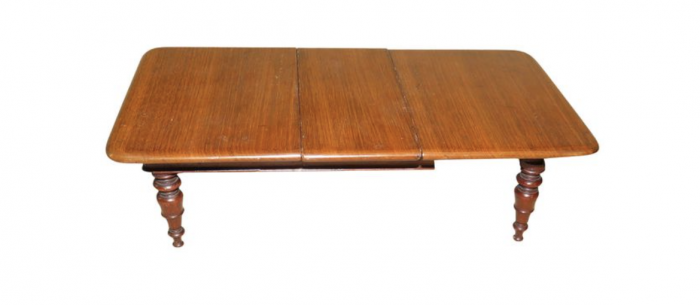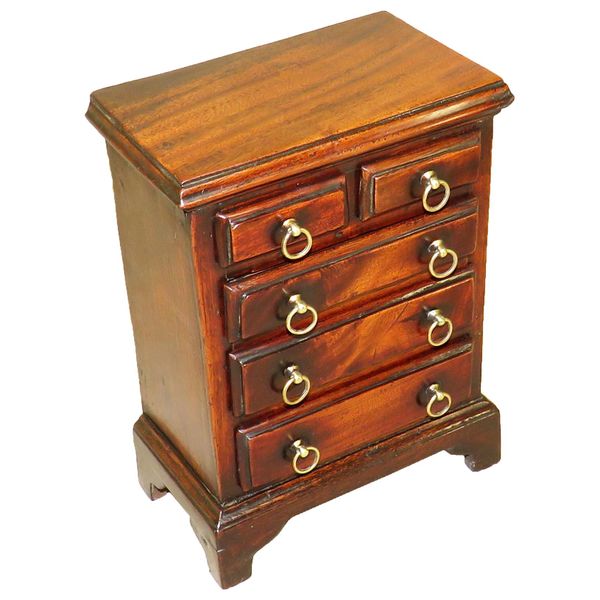This question has been asked time and again for many years as people have sought a definitive answer to the question which has accumulated so many different and varied answers. The aim of this article is to try and provide you with the facts not fiction associated with these charming little pieces of history.

By far the majority of miniature furniture started life as a travelling salesman’s sample. In essence they are the identical twin of their larger grown up counterparts, being made by the cabinet makers back at the workshop, in everything but size. The idea behind this being of course that a salesman could be gone for many weeks from the workshop accumulating orders for furniture from all over the country to be constructed upon his return. However, how could somebody possibly be expected to commit to spending a large sum of money on something which hadn’t even been made yet and they could only see a sketch of in a salesman’s book? The answer is of course, sample furniture. A workshop would produce as many different items as possible in miniature size using the exact same construction techniques, timbers and workmanship. They would then go on each salesman’s cart and off they would go to demonstrate the skill and workmanship their company was capable of and of course, importantly, the quality of the goods on offer. This is normally how you can tell if something would have been made for this purpose, basically it is of very good quality and is made to the highest standard. The renowned firm Gillows were very well known for adopting this practice and many pieces of miniature furniture at the top end of the market are believed to be Gillows samples, although it is very rare to find miniature furniture that is stamped with a maker’s name, like you see more regularly on full size furniture.
A smaller amount of miniature furniture is what we call Apprentice Pieces. These are again normally scaled down versions of real furniture, like chests of drawers and dining tables but of lesser quality than the real thing. It is widely accepted that this is due to them being made by an ‘apprentice,’ who is hoping to land a job at a workshop somewhere but first must prove his abilities to the boss. They would normally be issued with the cheapest available materials and be asked to construct something to the best of their ability.

Now and again a piece would be made by individual commission, although this was rarer. In this case the piece would normally be made exactly how the vendor had specified, and they would obviously have had a particular use in mind for the item in the first place. These items also are normally of exceptional quality as to be honest only the most skilled cabinet makers would have been asked to make them in the first place.
What is for sure is that all these items are wonderfully attractive and of course a lot rarer than their larger counterparts. They prove very popular to have around the home as well as being pleasing on the eye and at least if you fall in love with one of these items then you shouldn’t have the stress of trying to find space to put it if you do go ahead with the purchase of it.

 MENU
MENU














